Unknown language #18
« previous post | next post »
[This is a guest post by John Mock]
Query about inscription on crystal from Afghanistan.
Face 1 (actual and reverse):
Face 2 (actual and reverse):
Face 3 (actual and reverse):
Face 4 (actual and reverse):
Face 5 (actual and reverse):
Face 6 (actual and reverse):
The crystal in the photographs was purchased in Afghanistan in the 1970s and is now held in a private collection, the owner of which sent the photo images and asked for help in identifying the script.
The crystal bears inscriptions on 5 of 6 sides. On the sixth side is what may be a symbol. It bears no discernible resemblance to the 5 inscriptions.
I do not recognize the script. Its angularity may suggest a form of runic script, but that is just a guess. It does not appear to me to be an Indic script.
On 4 of the inscribed sides, the size of the characters are the same and on one side, the size of the characters is substantially larger.
I have arbitrarily numbered the faces, which proceed clockwise; 2, 3, 4, 5, 6. Face 4, which is opposite the face with the "symbol", is the face with the larger (and fewer) characters.
My speculation is that the "symbol", i.e., face 1, might identify where the inscription begins (if it is a continuous or linked inscription). The large character face, i.e., face 4, which is opposite face 1, the "symbol" face, might be a name. But this is mere speculation.
Any informed insight would be appreciated.
Selected readings
- "Unknown language #17" (5/2/24)
- "On the etymology of the title Tham of Burusho kings" (5/17/20)
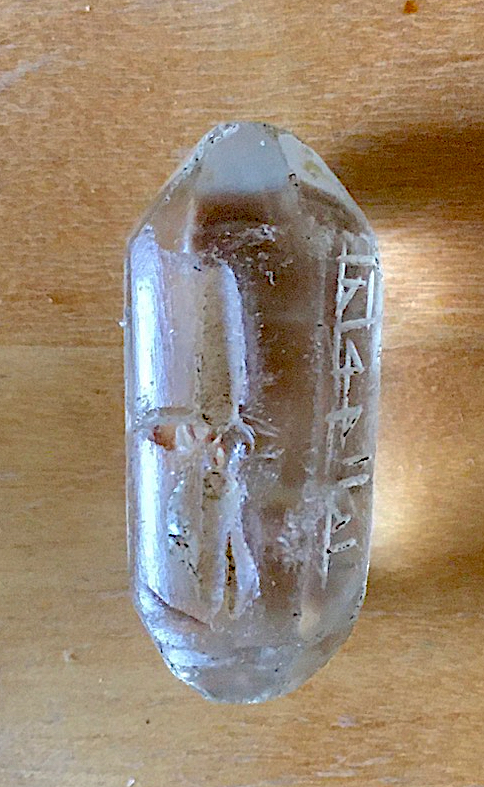
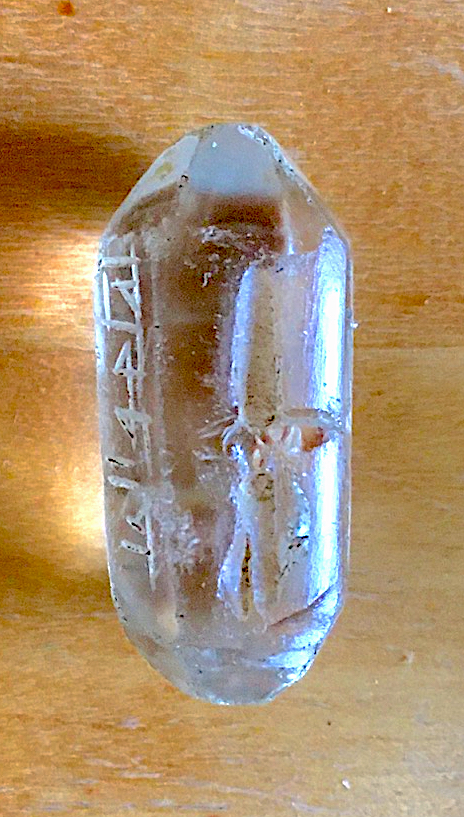

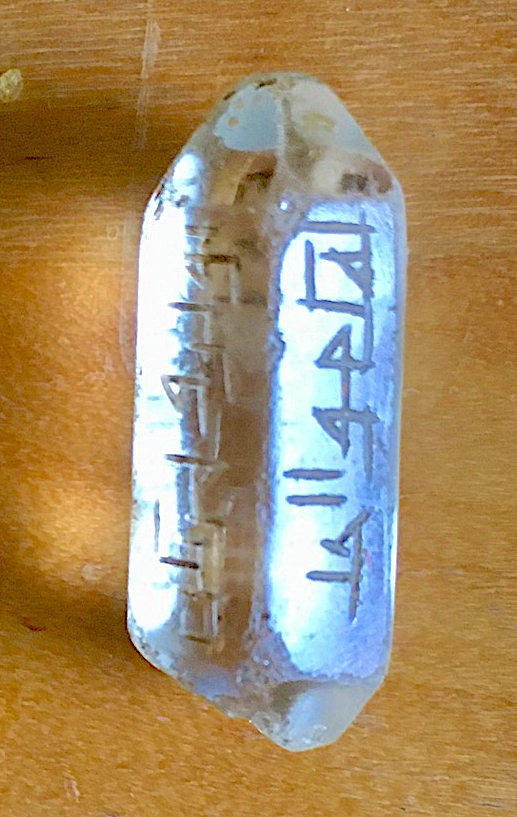
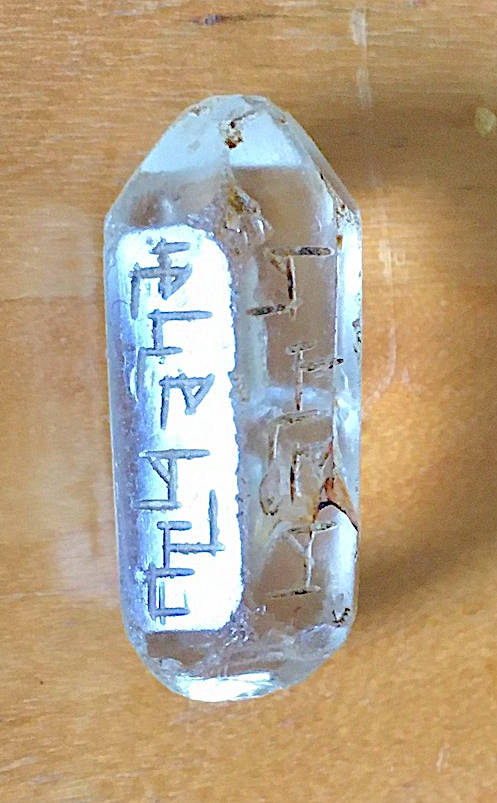
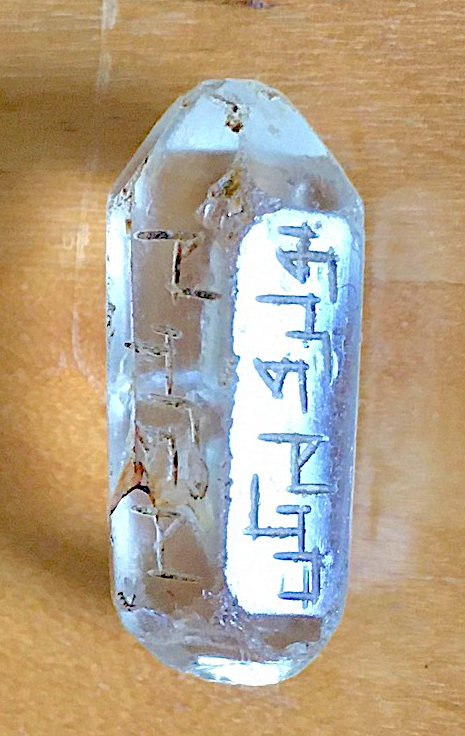




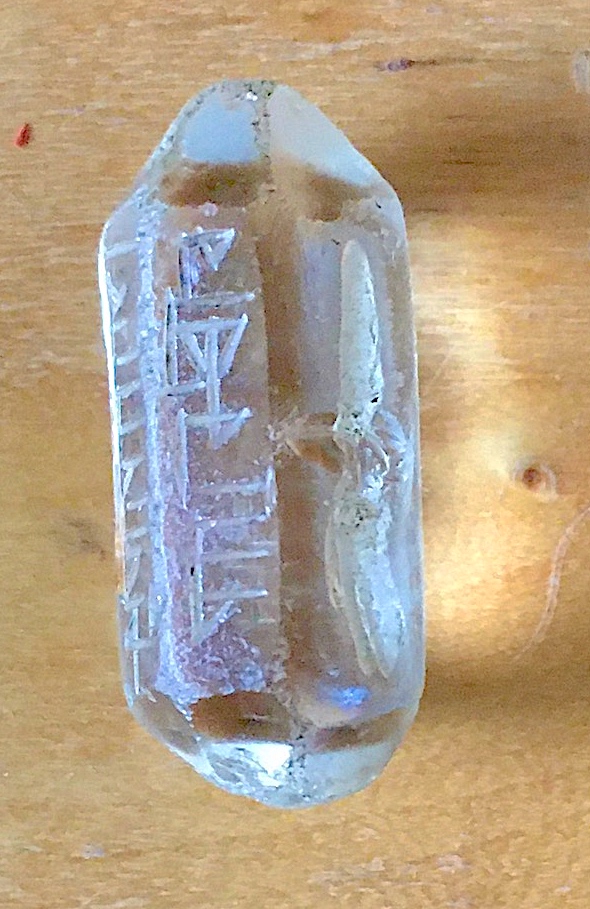
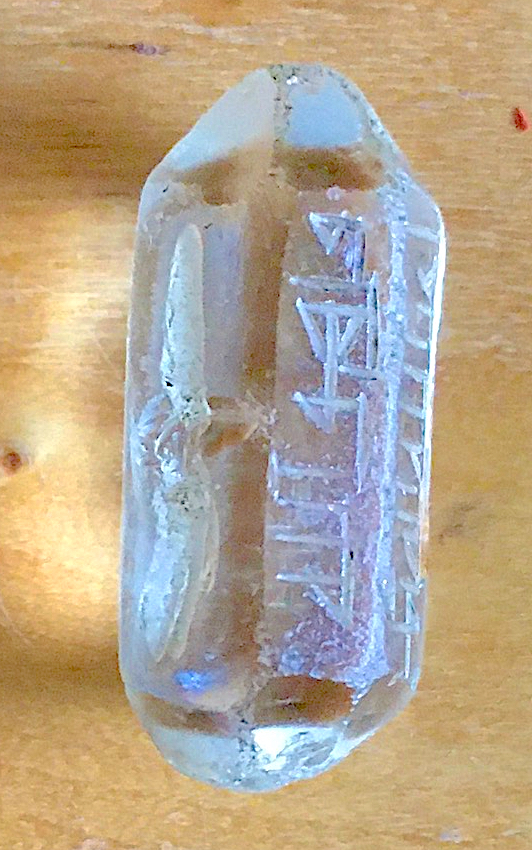
martin schwartz said,
June 3, 2024 @ 11:45 pm
Side 5, right, turned on its side has as last word unmistakable
Allāh in Arabic script; the inscription, undotted, is in a variety of
kufic or some lapidary ductus.. An expert in such matters will pribably be able to decipher it. Maybe try Geoffrey Khan?
Martin Schwartz
Sameer ud Dowla Khan said,
June 4, 2024 @ 12:50 am
It's Sūrat al-Ikhlāṣ from the Qur'ān, in a stylized version of the Arabic script: angular and without iʻjām (consonant pointing, obligatory in modern Perso-Arabic alphabets).
Face 5 (right) has the beginning:
(brighter) قل هو الله /qul huwa llāhu…/ 'Say: He is Allah…'
(darker) أحد الله الصمد /…l'aḥad. allāhu ṣ-ṣamad/ '…the One. God is the Absolute.'
Face 3 (right) is the middle:
(darker) لم يلد ولم /lam yalid wa lam/ 'He does not beget and is not…'
(brighter) يولد ولم يكن /yūlad wa lam yakun/ '…born and there is not…'
Face 2 (right) is the end:
(darker) له كفوا أحد /lahu kufuwan 'aḥad/ 'anyone equivalent to Him'
martin schwartz said,
June 4, 2024 @ 2:24 am
Bravo, Sameer ud-Dowla Khan! No need to approach Geoffrey or any other Khan. It just takes knowing the Qur'ān.
Martin Schwartz
David Marjanović said,
June 4, 2024 @ 6:53 am
Just for the record, "runic" is simply an inconsistently used cover term for angular scripts. Germanic runes and Turkic/Orkhon runes have nothing further in common.
John Mock said,
June 4, 2024 @ 10:18 am
Much obliged to all! Will pass this along to the owner.
tudza said,
June 4, 2024 @ 3:22 pm
Knowing very little on the subject. I'm pleased to have guessed correctly.
The angularity suggested to me that it was really hard to scratch nicely curved script into a really hard crystal.
ohwilleke said,
June 4, 2024 @ 6:53 pm
It would be a delight to know the hidden secrets of who made it, when, and who owned it over the years and why each person came to own it.
Francisco said,
June 5, 2024 @ 10:27 am
Regarding tudza's comment on the crystal's hardness: it is quartz and thus not especially hard to engrave.
Victor Mair said,
June 8, 2024 @ 7:25 pm
No matter how hard or what type of crystal it is, the surface is not pliable, hence not easy to make curved lines. Ditto for ox scapulae and turtle plastrons, as well as ostraca.
Andrew said,
June 11, 2024 @ 2:25 pm
On the other hand, the Burmese alphabet allegedly consists largely of curves, due to the fact that it was originally scratched into leaves with a stylus; straight lines would tear the fibrous leaves.